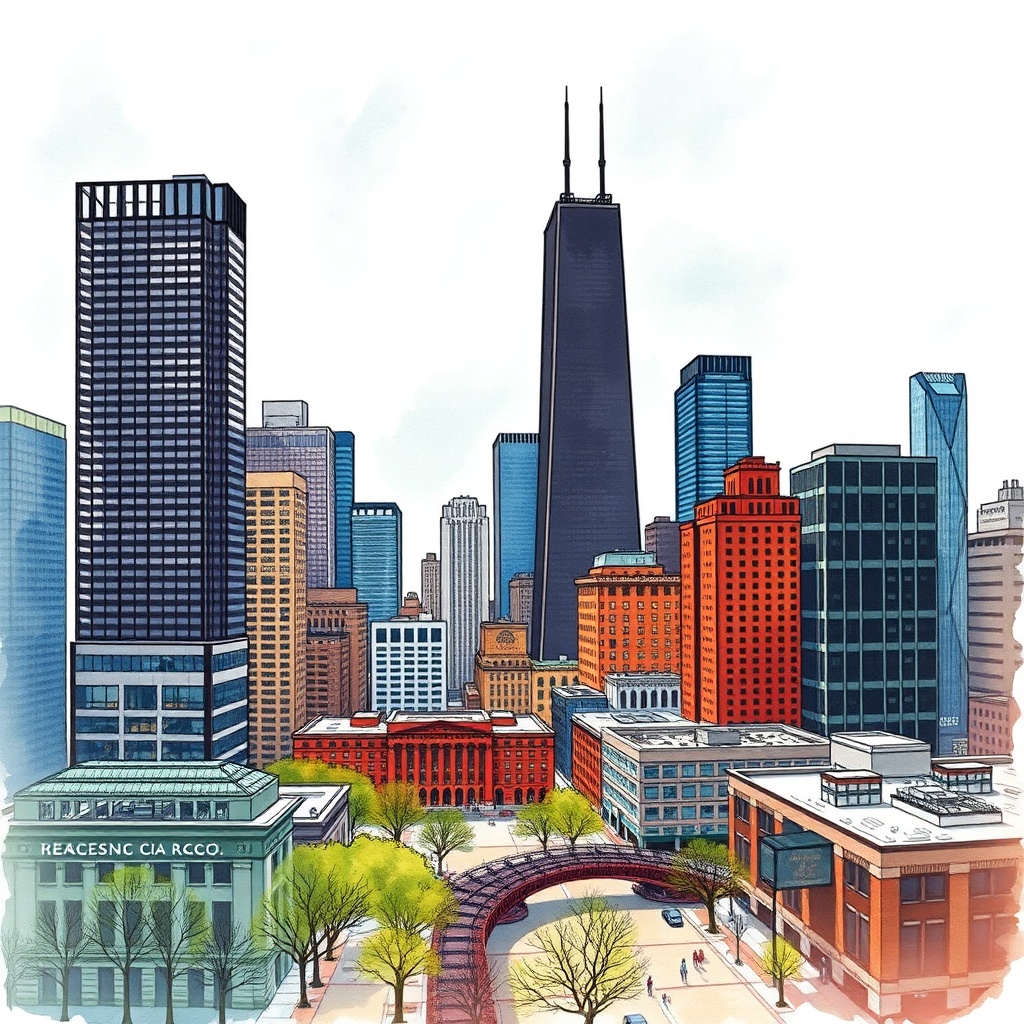Chicago rewards curiosity.
Whether you’re drawn to bold architecture, diverse neighborhoods, lakefront green space, or a food scene that blends comfort classics with daring innovation, the city offers a compact, walkable experience with plenty to discover.
Architecture and waterfront: why the river matters
Chicago’s skyline is an open-air museum.
Popular architecture boat tours remain one of the best ways to learn how steel, glass, and vision shaped the city’s identity while drifting along the Chicago River. The Riverwalk itself has evolved into a lively linear park with cafes, seating areas, and public art — a great place to people-watch, take photos, or launch a paddleboard. For skyline views, the lakefront and elevated observation decks give dramatic vantage points at any hour.
Parks, lakefront and outdoor life
The lakefront is the city’s backyard.
Miles of trails link beaches, parkland, and cultural institutions, making biking or jogging a refreshing way to move between neighborhoods. Urban green infrastructure — from restored wetlands to rooftop gardens — is part of a broader push to make the lakefront resilient to changing weather patterns, and to keep the shoreline usable throughout the seasons.
Neighborhoods to explore
Chicago’s neighborhoods each carry a distinct personality. From artsy corridors and historic districts to vibrant market streets, you’ll find independent shops, neighborhood bars, and local bakeries that capture daily life in the city. Look for street murals and community calendars to find pop-up markets, block parties, and small-venue music shows that showcase local culture beyond tourist highlights.
Museums, music and cultural institutions
The city’s museum scene ranges from encyclopedic collections to experimental galleries. Major museums anchor cultural corridors near the lake, while smaller institutions and performance venues host jazz, blues, and contemporary music nights that hint at Chicago’s deep musical legacy. Free and low-cost days make many cultural attractions accessible; check local listings and neighborhood calendars for late-night openings and special programs.
Food: from comfort classics to contemporary kitchens
The food scene is both proudly local and relentlessly inventive. Staple eats — think hearty sandwiches and signature pizzas — coexist with tasting menus, small-batch bakeries, and neighborhood taquerias.
Farmers markets across the city highlight regional produce, and chefs emphasize seasonal, locally sourced ingredients. For serious food exploration, follow food tours or neighborhood dining guides to sample a curated range without missing neighborhood gems.

Getting around
Public transit and bike-share systems make it easy to move between districts without a car.
Walking often reveals striking architectural details and hidden cafés you’d miss from a bus window.
If you plan to drive, be mindful of traffic patterns and parking rules; many visitors find transit or ride services more convenient for central neighborhoods.
Practical tips for visitors
– Dress in layers: lake winds and urban microclimates can change conditions quickly.
– Book popular attractions and architecture tours in advance, especially on weekends.
– Use neighborhood guides rather than expecting a single “downtown” experience; each area has its own character and schedule of events.
– Look for free public programming — outdoor concerts, museum free days, and farmers markets provide a lot of value.
Chicago blends big-city energy with approachable neighborhoods and surprising green pockets. With a mix of must-see landmarks and local discoveries, it’s a city that rewards both planned itineraries and wandering.
Plan a route, leave room for detours, and let the river, parks, and neighborhoods show you a side of the city that stays lively and inviting through every season.
